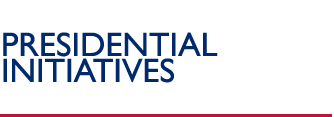Congo Basin Forest Partnership

The Congo Basin Forest Partnership (CBFP), announced by President Bush in August 2002, addresses deforestation and biodiversity loss in 11 key landscapes in Africa's Congo Basin. Nongovernmental and U.S. Government partners implement activities that address the root causes of tropical forest and bio-diversity loss through protected area management, large-scale landscape management, promotion of economic development and poverty alleviation, and improvement of natural resources governance.
- A zoning process that takes into account traditional agricultural communities and hunters has been initiated in the Ituri Forest, one of the Central African Regional Program for the Environment (CARPE)/CBFP landscapes in the Democratic Republic of the Congo. This process, sanctioned by local and government authorities, will revise a zoning system established by colonists in 1937 and 1949 that supported national interests and disregarded local interests. This activity supports natural resource governance and contributes to long-term sustainability by taking into account traditional rights, demographic realities, and national reunification. This activity responds to an increase in pressure on the region's natural resources due to recent immigration: over a six month period the region's administrative center grew from 1,570 to 2,265 inhabitants.
- A memorandum of understanding has been negotiated with at least six gold-mining communities in the southeastern region of Gabon, adjacent to Minkebe National Park. The agreement identifies sites where gold miners can hunt unprotected wildlife species for subsistence in areas surrounding their immediate camps. The agreement is in the process of being signed by the provincial government, the National Park Council, and the ministries in charge of forests and mines. This agreement should lead to a decline in illegal hunting incursions in the national park by the mining community. The agreement should also provide an incentive for local communities to informally guard against outsider poaching in the national park that would threaten the status of their legal agreement.
- CARPE/CBFP partners working in Equatorial Guinea and the Democratic Republic of the Congo are helping local organizations develop programs to ensure the next generation of African conservationists has access to high quality academic and technical information to reduce dependency on external sources of technical expertise. In each country, recently established local centers for biodiversity conservation are training local faculty, developing specialized curricula, and establishing research programs for their African students to support the conservation work in CARPE/CBFP landscapes.

Promoting Sound Management of Protected Areas to Save Forests and Wildlife
Significant progress has been made with the implementation of CARPE/CBFP activities in many of the program countries. In the Republic of the Congo, an agreement between the government and a CARPE/CBFP implementing partner resulted in a commitment from the government to create new protected areas and work with CARPE partners toward creation of the Congo Wildlife Service (CWS). The CWS should have a parastatal-type structure and be responsible for management of the national protected area network. Creation of the CWS will, among other things, strengthen the government's ability to manage and respond to the threats that confront the Republic of the Congo's national parks, evaluate the protected area network, and develop a strategic plan to address gaps and weaknesses and expand the scope of activities, such as antipoaching and ecotourism, in the national parks.
- Building partnerships and linking local to international partners is a complex process that, while building long-term sustainability, can slow down implementation and the achievement of short-term targets.
- Conservation programs can be successful in the midst of violent conflict if partners are committed to political and diplomatic processes that complement technical approaches.
- A program, distributed widely over a large geographic area, six countries, and a dozen large landscapes, necessarily requires strategic and focused tools and effective strategic planning and monitoring systems to frame a consistent and complementary approach.
Note: Results for this initiative were reported through USAID's consolidated reporting system
Back to Top ^
|


